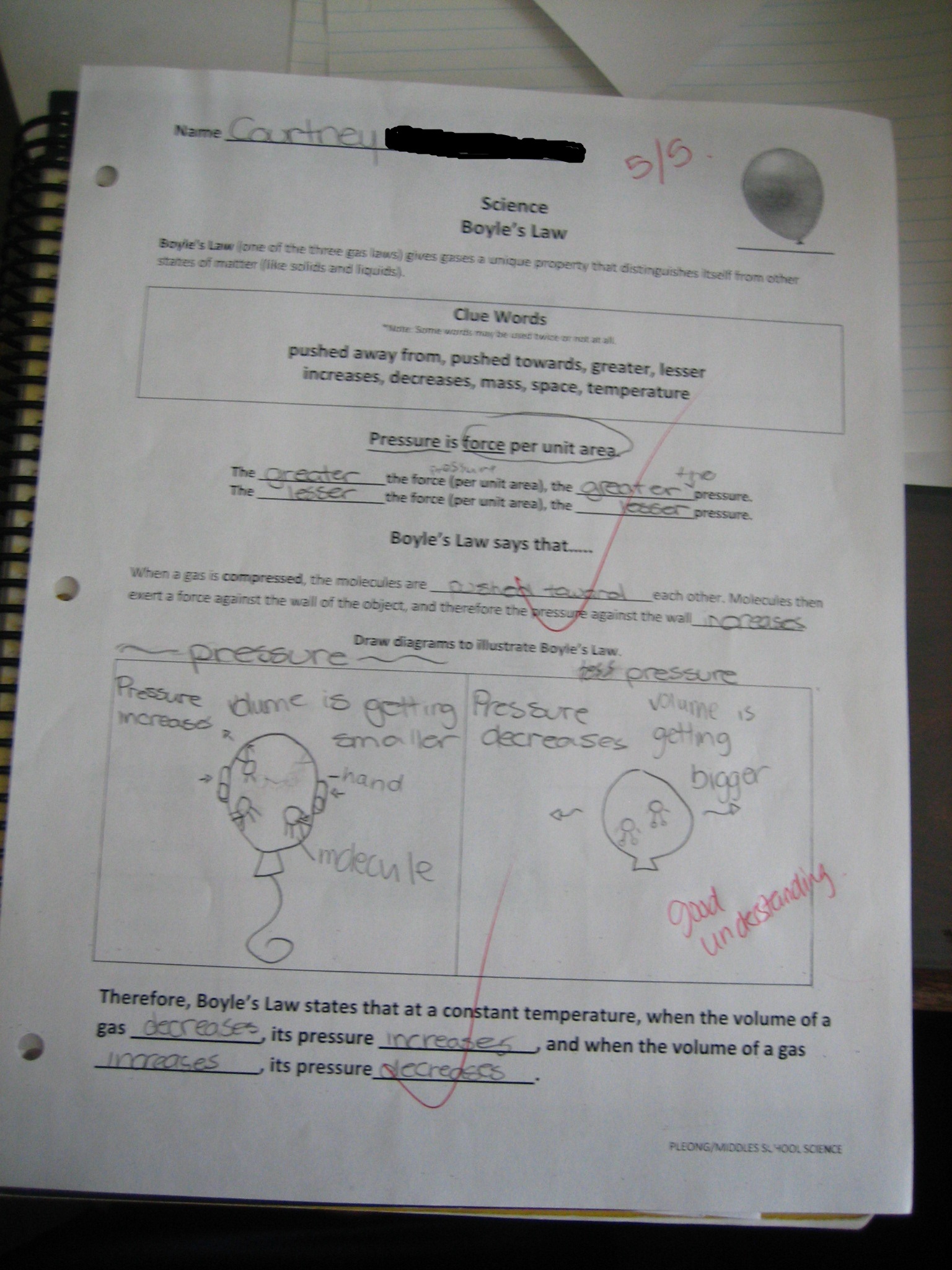Children often learn about the world through their senses. Whenever possible, I engage students’ learning by appealing to their senses.
Boyle’s Law is one of the most challenging concepts to teach to a Grade 6/7s class. It involved understanding how an invisible medium such as gas would react in the presence of changing conditions like pressure, temperature, volume, etc. Where and how do you even begin to describe something as invisible as a gas?
Since students at this age are fairly imaginative, I engaged students by appealing to their imagination. We explored the effects of gas molecules under certain conditions.
To illustrate Boyle’s law, I asked students to imagine what it felt like to have a warm, glowing fire in the middle of the class. I then got the class to imagine what it was like as the fire grew “hotter” (students got out of their seats and started moving around). Next, I got students to imagine what it was like when the room got really hot. Some students attempted to open the door of the classroom, etc.
Conversely, I asked students to imagine how they would react if the room got colder. Students stood closer to each other. Next I got the class to imagine what it was like if the room felt very cold, like minus 40 degrees Celsius. Students came huddling together as a class. I told the class that is exactly what gas molecules would react when they feel very hot or cold.
Next, I handed out a worksheet and asked students to apply and illustrate what they have learned about “Boyle’s Law”. Many students described Boyle’s law successfully by drawing pictures to illustrate their understanding. I was quite impressed with the results and I was quite sure the class really enjoyed getting out of their seats and participating in the experience.

